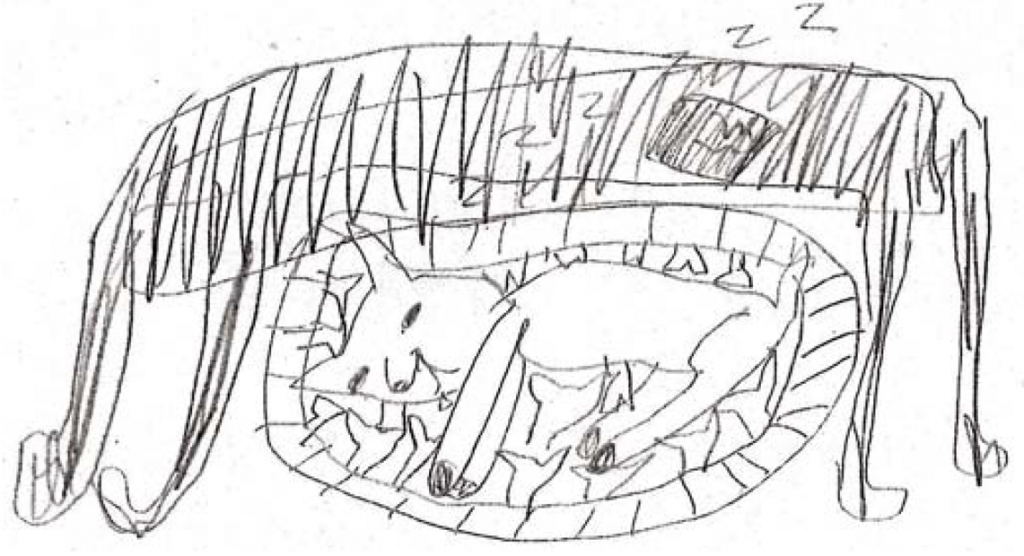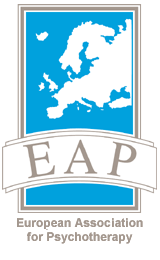Dogs Don’t Wear Clothes
This is Part Two of an article that has appeared in Context, the magazine for family therapy and systemic practice. The original article title was, “Dogs Don’t Wear Clothes.”
Dogs can’t talk but they can communicate without words.
Unlike a human with layers of defences, and the confusions of language, Gizmo appeared uncomplicated to this child. His worry, easy to read in his watchful gaze, and yet his need for love was clear. His story of trauma and rescue could immediately be used in the therapy session: “He likes you”; “He seems to be feeling safe with you but he is scared of everyone because of how hurt and lost he has been.” “Now he is feeling safe with us.” His longing for connection; was also uncomplicated because he stayed close for reassurance; for a stroke and a kind word. My role as a therapist could be partly carried by this little, scared dog, carrying a narrative about loss and recovery, and some important learning about how to reassure. Of course, by reassuring him she could feel the same safety and the triangle of the dog child and therapist was complete.

Rescue dogs know how it feels to be scared and lost
Therapists use narrative to build connections between the deep emotional parts of the brain and the reflective brain, gradually helping the person to feel more in control and calmer. I found I could use the dog’s story of survival to bring hope and understanding. Gizmo had survived abuse and had run away to be found and rehomed, and Thompson was separated from his mother at five weeks but was rescued by an organisation called Animal Heaven to be rehomed. There are happy parallels with many of the fostered children that I work with in these stories.
Dogs are nice to stroke
Having a dog can solve the problem of using touch in therapy with children. We are trained to use therapeutic touch in moments of extreme feeling: we might often wish we could cuddle a child but this is not possible. The dog’s warmth, fur and softness giving connection and comfort, needed by children who come with sadness or a sense of disconnection from humans. I would add that there could also be modelling as the therapist’s compassion for the child and dog in their timid moves towards each other was a role model too.

Dogs can be scared of us
Gizmo’s timidity and humility as a frightened little rescuedog definitely helped carry this part of the transference of many children, who might be shy on coming to see me but here was a little dog almost shaking with fear needed to be told it was safe for him. One autistic and very damaged child deliberately frightened him and after this he couldn’t come into those sessions. She had to know there were boundaries and this was another way of modelling safe boundaries for her.
Should dogs wear pants?
Yet, for some children, the touch is too much or provoking. One comment about the dog’s nakedness by an autistic child with abuse in his past was that he should wear pants because his bits should not be seen. This allowed a less threatening conversation about privacy and boundaries.
Gizmo was useful for more than one child with severe sexual abuse in their background because we could talk about how it felt that he wasn’t wearing pants… how it made them feel confused to have him sprawled on their lap: was this provocative for them, did this come from something else that had happened before? Dogs are safer than people. Gizmo calmed this conversation by being unaffected by the words, and in some ways absolutely a safe vehicle unlike the sexualised transference to the therapist where the child may be inhibited by a real fear they could be abused again.
He’s sitting on my jumper I don’t want him here
Some people don’t want the dog there and I always ask, when I first meet people, if they want the dog there or not and sometimes we can experiment and see how it feels to have him in the room.
For several children struggling with intense sibling jealousy, putting him out of the room because he is annoying is very clear. It was helpful to be able to recognise one child did not like Gizmo in the room and wanted the full attention on his own and needed to feel in control of this, relating it to how he had felt with his little brother interfering with his play, sitting on something of his.
Dogs are loyal and give unconditional love
For both children and adults coming to see me, I found that Gizmo made them feel good and they liked to see him. His welcome was always positive and his greeting so immediate he helped with the transition to the session. “Hello Gizmo” and stroking him became a lovely way to start many sessions.
He makes me feel safe For a number of children, Gizmo carried the positive transference and became their best friend when the negative transference needed to be held by the therapist. It is people who have disappointed or hurt the child but Gizmo, and now Thompson, are safe. A young child in foster care sat stroking Gizmo and told me that he doesn’t really get on with people and doesn’t get on with other children at school; we began to talk about how hard this was, while Gizmo provided comfort.
“I want to come to see Gizmo not you!” The splitting between bad Rose and nice Gizmo could be productive and enable more safety for troubled children needing to show how adults have let them down through the negative transference. For one child who had worked with me with an intense “hate in the countertransference” (Winnicott, 1949), I needed to be constantly like other adults who disappointed him, who got it wrong for him, who would always, in every small way, let him down. Again, this can be a challenging transference to carry and work with because the child also needs to be there and feel safe. Once I introduced Gizmo, I found he carried a positive transference for me. He was loved and I could be hated even more, he was the reason the child wanted to come, never to see me!
Dogs curl up and relax
In his older years; Gizmo was great at just ‘being’.
Dogs don’t live as long as us
The death of Gizmo was always going to be tough and I worked with this as we do with all endings in long-term work, especially with the fostered children who have lost so many people, but for all children knowing about death of course can bring up other deaths. I watched and waited with this one and used talking about Gizmo; that he might not be here for much longer, as needed with each child. For the children who knew us over a long time, we had to grieve for his loss and we did a ceremony or made him a card. One child brought me little gifts because she knew I would be sad. Here, for the therapist to manage their own grief appropriately and be able to move on with their client as needed, is a challenge but one I knew, with my supervisor’s help, I would manage, and we did.
Rose Maxwell is a UKCP registered independent integrative child psychotherapist and supervisor. She trained at the Institute of Arts in Therapy and Education, qualifying as a psychotherapist in 2007. She has a private practice in the Fiveways area of Brighton with an art therapy room and uses arts in supervision.

Rose has over 30 years of experience with working with families and children. She has worked with fostering and adoption for many years currently In an ISP fostering agency with troubled children. She supervises for the Oasis project working with children in families where adults are abusing drugs or alcohol, for therapists and counsellors working in schools, for Dolphin house and also Chestnut Tree House and St Catherine’s Children’s Hospice. Rose works with a wide range of issues affecting children, families and adults. Rose’s orientation is integrative, using attachment and relational theories as well as humanistic theories of change with an emphasis on healing through the imagination. She uses animal-assisted therapy where this is useful.
Get in Touch
This was written by Rose and you can contact her here.




Comments